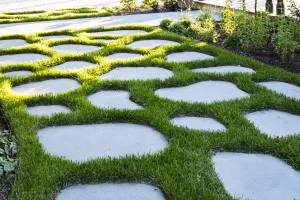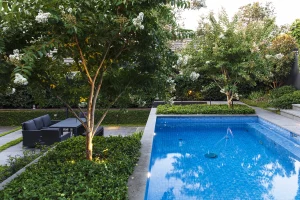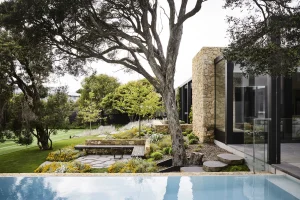Plants are obviously our passion, so we’re keen to share some of our favourites and a tip or two on how to get the best out of yours.
We’ve decided to start the ball rolling with a plant prominent in our recent Camberwell project – the Forest Pansy tree (Cercis Canadensis).
This superb small tree is an excellent choice for a landscape design where a colourful, elegant, purple-leafed look is required. Large heart-shaped leaves open up in spring to a brilliant eye-catching shade of reddish-purple with a velvety-satin appearance, deepening to purplish-black then fading to purplish-green in summer. Generally showcasing brilliant yellow to orange colours in autumn. The branches have a distinctive, smooth dark brown wood. The wood has a distinctive contrast with the blossom like pink flowers that are borne before the re-emergence of reddish-purple leaves in spring.
This tree typically grows to five meters and is effective when planted as a group or as a focus stand alone tree. Forest Pansy trees are ideal for small gardens and courtyards. They also work well in a larger garden design as interesting foliage, featuring stunning spring flowers and commanding shade when fully mature.
Forest Pansy trees were chosen primarily in our Camberwell project due to their striking colour. The garden design was calling for a statement in the front entrance and breaking away from the traditional garden ‘greenery’ was certainly a way to achieve that goal. We planted three trees next to each other to create a shady canopy when fully grown. The contrast with the light gravel adds to the overall impact of these magnificent trees. We adore the seasonal changes of the Forest Pansy – a constant performer, it’s hard to imagine a garden without at least one!
For more images, visit Camberwell Project 2 in our gallery.



